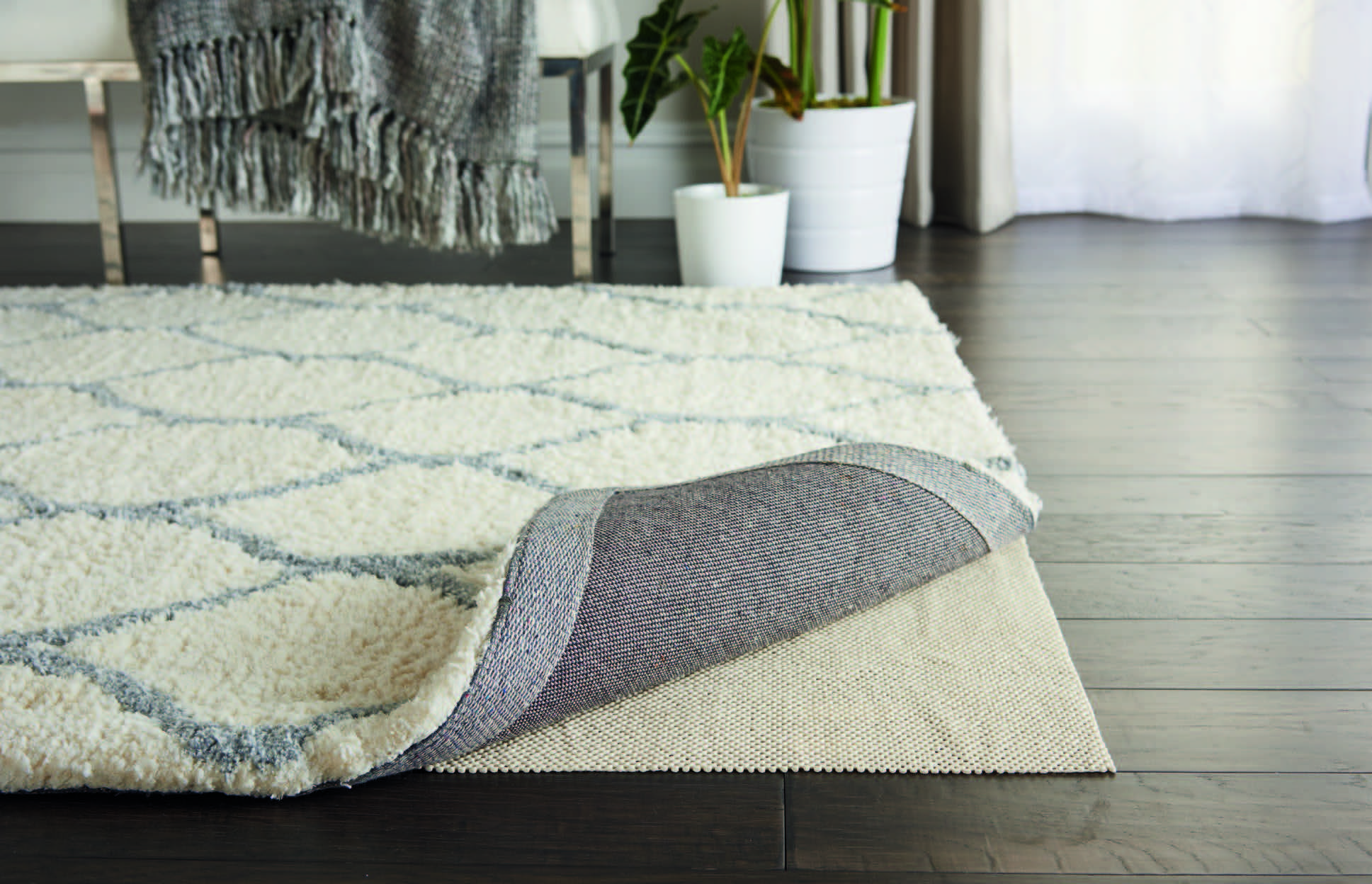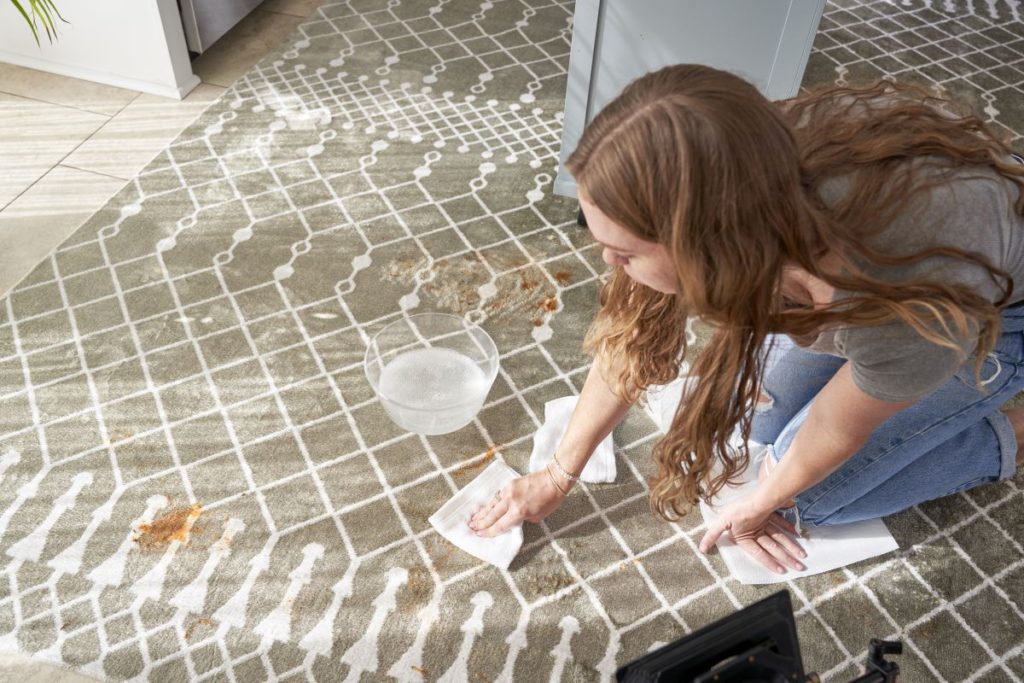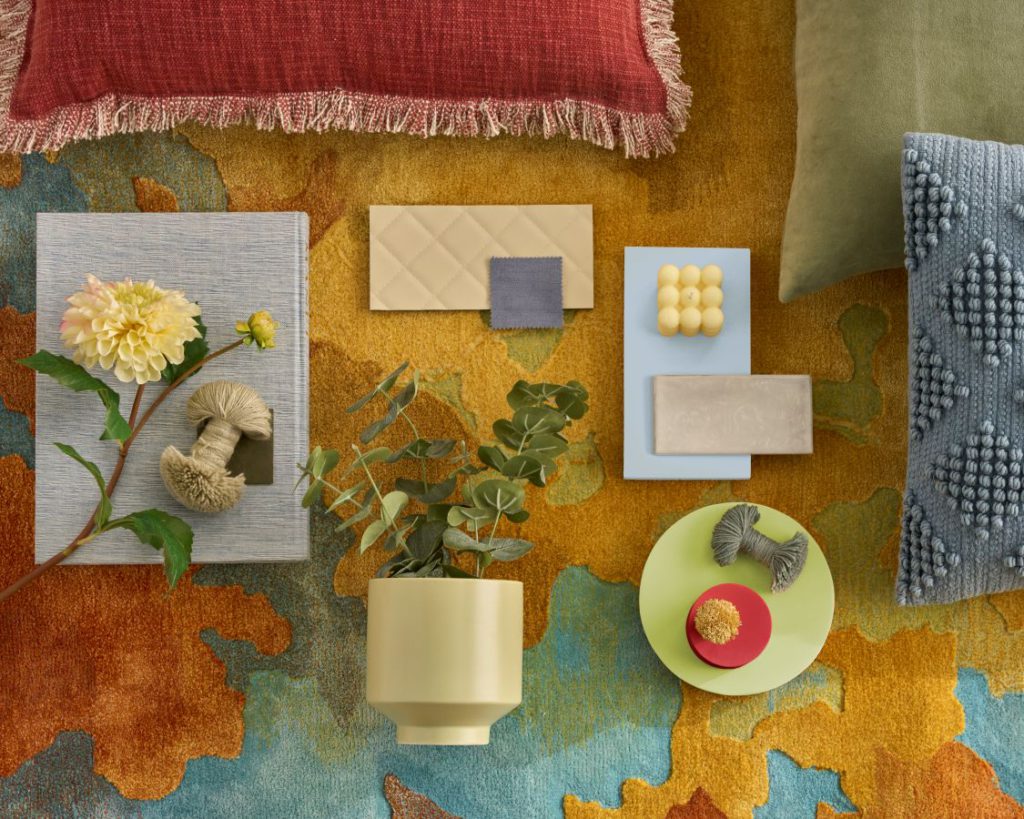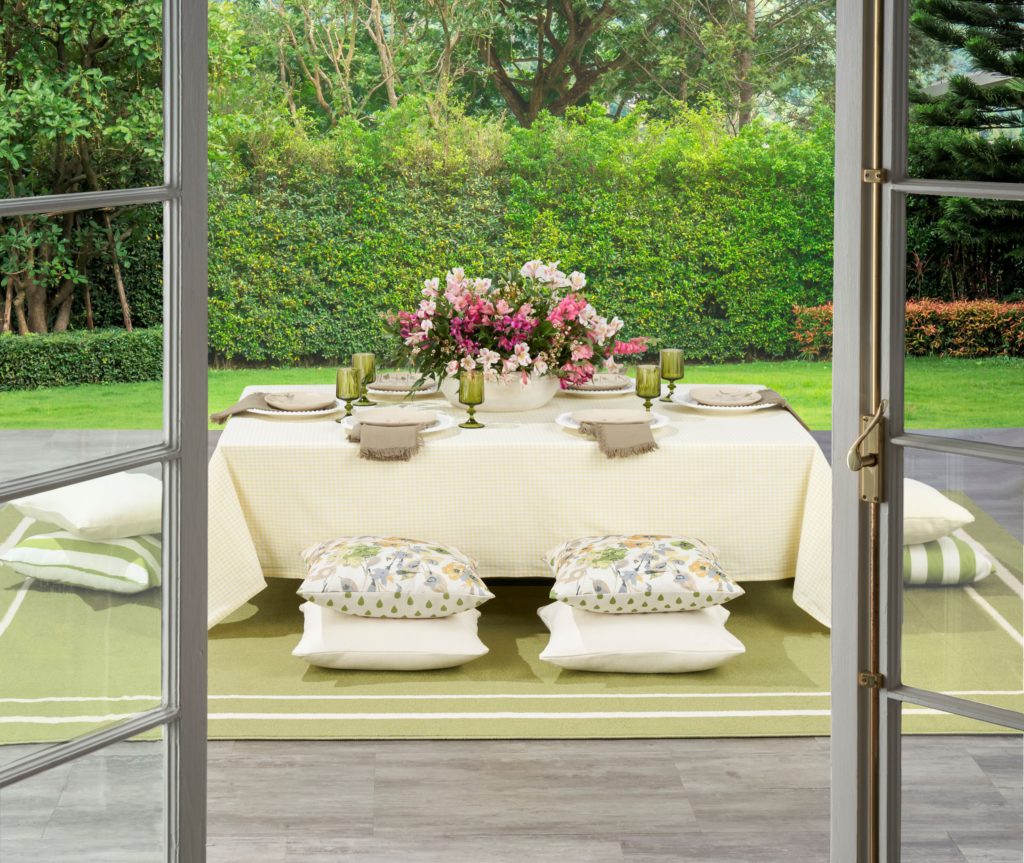Rug Pads Part 1: Why You Need a Rug Pad
Last updated on September 30th, 2021
Protect You, Your Floors and Your Rug
Should you install a rug pad and why do you need one, you ask?
Regardless of whether your rug feels thick and cushioned, it still needs a rug pad. Because the pad isn’t for your feet — it’s for your safety, your floors and your rug!
Don’t get us wrong — rug pads can certainly add a level of comfort, especially when they’re placed under a flat weave rug that has no pile to speak of. But ultimately, the best reason to buy a rug pad is that it will extend the life of your rug, and the right rug pad will help protect your floor as well.
Five advantages of using a rug pad
Rugs will almost always shift to some degree — even large, heavy rugs. Lighter flat weave rugs are even more susceptible to sliding under foot, particularly in areas where children might be running through the room.
Simply placing furniture on top of the rug may secure that part, but not the whole rug. As a result, your area rug needs an additional foundation to keep it in one place. Rug pads are constructed to be less slick than the back of a typical rug, and some even include tacky surfaces to assist even more.
Any time your rug shifts, it creates friction between the floor and the rug backing. This can cause premature wear, particularly if the floor has a rough or uneven surface. If dirt or pebbles slip under the rug, they can scratch softer surfaces like hardwood floors.
When rugs aren’t properly ventilated on the bottom, it’s easy for moisture to accumulate, soak in, and weaken the rug. Or even worse, cause mildew. That’s especially true if the rug surface doesn’t lie flat on the floor, possibly developing ridges or bumps where dirt and dust can collect.
Using a rug pad that allows for proper ventilation can help keep your rug cleaner and moisture-free. In addition, vacuum cleaners work much better on rugs when there is sufficient airflow underneath.
Different types of rug are better suited for high levels of traffic, which is why you should always think about how you use a space before you select a rug. Regardless, as more people walk on your rug, it’s continually being pressed down into the floor. The harder the surface underneath, the less give and more impact the rug takes. Adding a layer of padding helps cushion the rug and lessen the pressure on the rug fibers. Additionally, the pad helps with sound insulation.
Rug Pads help extend the life of your rug by providing cushioning and absorbing the impact and compression of rug fibers from furniture and regular foot traffic over time.
While it’s tempting to simply get the thickest pad and get the most cushioning, you should always be careful about using thicker pads with thin rugs. This can potentially make the rug more vulnerable to punctures or tears under heeled shoes.
Typically, your rug should be between 1/8th and 1/4th inch off the floor. If your floor has uneven surfaces such as bricks or raised tiles, a thicker pad works best. If you can see the rug pad outline through your rug, the pad is probably too thick.
Rug Pads provide safety, stability, ventilation, extra padding, increased comfort, insulation and sound proofing in the home. They protect the rug’s weave, extending the life of the rug and protecting your investment.




